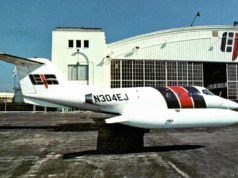
Air travel used to be a time of respite, whether you were flying via a commercial airline or business aviation. Once airborne, you were out of touch, able to focus on reading and writing reports, or just catching up on much-needed relaxation.
That’s no longer so. The demands of today’s Information Age require 24/7 access to communications with work associates, family, and friends, as well as monitoring the news. That requires almost continuous access to the internet via Wi-Fi, just to keep up.
“Connectivity” was one of two primary messages heard in many presentations, as well as in just about every informal discussion in every convention hall aisle during last October’s 70th annual National Business Aviation Association convention. Continual in-flight internet access aboard is now mandatory, both for business and for relaxing entertainment.
And it’s not just for you, the owner/passenger. That square flight bag briefcase containing the “Jepp” airways charts and airport approach plates (maps) that used to be carried by every professional pilot, largely have been replaced by smart phones and tablets, now carried in flexible backpacks. Virtually every FBO now offers free Wi-Fi for their passengers’ business use, and for pilots’ online flight planning.
That constant connectivity has a safety and cost control aspect, as well. The “Internet of Things” (IoT) enables your technician on the ground to monitor all aircraft operating systems – engines, airframe, and avionics – in real time, spotting any anomalies when they occur. No need to wait for the next inspection or a system failure – problems can be addressed immediately upon landing, improving your aircraft’s reliability and avoiding expensive unscheduled maintenance events.
The second big message heard during the convention was about another form of connectivity: evolving means of access to business aircraft. Since fractional aircraft shares were first introduced more than 30 years ago, new industry entrants continue to produce variations on that theme, from jet cards to structured shared ownership.
The one commonality among them? They all involve connection: shared aircraft use. The desire to own a dedicated aircraft is not quite as strong among those younger than 40 or so – the coming generation of business leaders.
These new modes of access are driven by connectivity, by an internet accessible to virtually everyone, everywhere, at any time. It enables charter brokers, and fractional and charter operators, to share pricing and availability information, and respond almost immediately to each individual client trip request.
So connected via the internet is now one large networked fleet of aircraft, linking – and marketing – the world’s 2,200+ charter operators. If your aircraft is managed and available for charter, its next revenue trip might well be from the far reaches of this growing network.
That network will be critical to Business Aviation’s continued growth – for safety, service, reliability… and revenue. BAA
Publisher of Business Aviation Advisor, has nearly 50 years in business aviation including executive positions at aircraft management/charter and ground services companies. He is a past director of the NATA and Corporate Angel Network.





